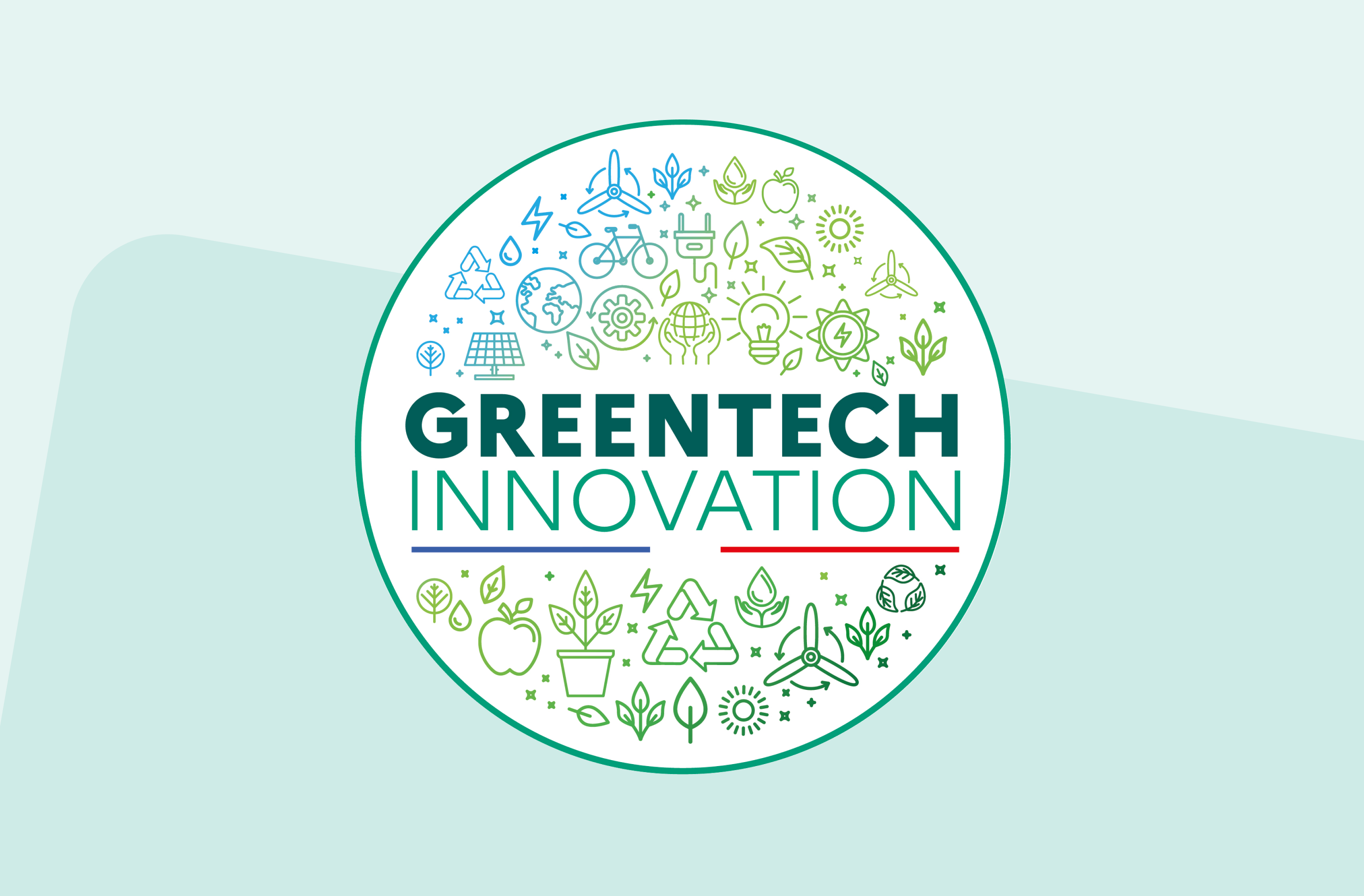Feedback on the Rzilient x Keewe Webinar
.png)
Discover our all-in-one solution
Digital devices and objects have an increasingly important place in our daily lives. Their consumption is increasing every year, and so is the production of waste electrical and electronic equipment (60 million tons of WEEE produced annually).
It is therefore not surprising that digital technology has become a major environmental issue, and that the question of its impact and the future of the sector is being raised.
On January 20, on the occasion of the webinar “What if the management of our digital equipment was more eco-responsible?”, our CSR manager, Audren Letellier, and Alexandre Torbay, co-founder of Keewe - a financial services platform that facilitates the ecological transition of its users - asked themselves the question of the place of digital technology in environmental issues. After setting the scene for the current climate emergency (marked by increasing climate change), they shared key figures on the impact of digital technology, and discussed in more detail the issue of terminals, and what can be done to reduce their impact.
The climate emergency context
On 9 August 2021, the Intergovernmental Panel on Climate Change (IPCC) of the United Nations published theAR6 Climate Change 2021, the first part of its sixth climate assessment report. Its conclusions are unambiguous: climate change is the consequence of human activities, which have warmed the atmosphere, the cryosphere, the oceans and the lands, and caused emissions of greenhouse gases (PEOPLE).
This increase has been happening over the last 150 years: +1.1°C, it's the Increase in average surface temperature of the world between 1850 and 2020, and +0.8/0.9 for the oceans.
The consequences of this imbalance are already being felt, with an increase in the frequency and intensity of extreme weather events that threaten lifestyles and territories :
- Heat waves
- Heavy rainfall
- Droughts
- Conditions conducive to fires
- Rising mean sea level (+9 cm between 1993 and 2019)
- Ocean acidification
A few weeks after the publication of this report, the COP26 opened in Glasgow and saw the reiteration of the international commitments already made at COP21: to remain under the +1.5°C/2.0°C, and achieve carbon neutrality by 2050.
Impact of digital technology: orders of magnitude
The weight of digital technology in GHG emissions
So what is digital technology doing in this? Is its environmental impact significant?
To say the least: the sector represents between 3.5 and 4% of global greenhouse gas (GHG) emissions, currently knows a growth around 6% per year (a figure that is likely to increase further with the development of the sector, and seems unlikely to be compatible with a 2°C trajectory...), and also exerts increasing pressures on natural resources (with the extraction of materials intended for the manufacture of equipment).
LThe causes of this exponential growth
Several reasons for the increase in this not-so-dematerialized impact:
- The surge (+26% /year) in the quantity of data exchanged (data), For example, the viewing of online videos (nearly 60% of digital uses) generated more than 300 million tons of C02 in 2018 - as many greenhouse gases as Spain, or nearly 1% of global emissions.
- The rise in the number of connected terminals: Internet of Things (IoT) corresponds to any object or “thing” connected to an Internet network and which can communicate with each other by exchanging data. This market has experienced strong growth in France and around the world, in part thanks to the coronavirus pandemic (travel restrictions, obligation to work remotely, etc.).
- The rise in the number of people equipped with connected terminals: The number of people using a smartphone represented 6.4 billion or 79% of all mobile connections in the world in July 2021. This represents a 68% increase in average monthly mobile data traffic worldwide in one year.
- The development of new networks to provide these new services, like fiber networks and 4G and 5G mobile networks, which make it possible to transfer more and more data more and more quickly, and therefore results in an increase in the number of data exchanged, the circle is full.
The increase in the use of digital devices leads to an increase in their energy consumption, and therefore an increase in GHG emissions.
The case of terminals
As far as the distribution of GHG emissions in the sector is concerned, it does not necessarily correspond to the common misconception: they are the terminals that weigh the most (64%), more than the data storage, data centers (20%), and the networks (16%).
State of play
The impacts come mainly from user equipment, and the increase in the digital footprint is explained by a number of rising trends, in the professional environment in particular:
- The Number of new equipment put on the market : 371 million pieces of equipment in 2019, an increase of 50% compared to 2018,
- De facto, the increase in production results in Increase in the number of D3Es,
- The equipment rate : 2.5 devices per user in France, which represent 44 to 70% of the impacts of digital technology per user and can be explained by the increasingly frequent generalization of the second screen.
And at the same time, the Decrease in renewal rate : in 30 years, the duration of use of a device has increased from 11 to 4 years. These curves are causing unprecedented tensions on non-renewable resources, and threatening to create shortages. According to Frédérique Bordage, a French specialist in responsible digital technology: “Digital technology is a resource that will run out in 30 years.”
Reconditioned as a solution to reduce your digital footprint
Making a new device has more impact than using it. For terminals, the part related to manufacturing represents 45% of the impact of a device (hence the importance of considering the extension of its lifespan) and 19% are related to its use.
Make the choice of repackaged (accompanied by a sustainable IT policy!) has numerous benefits, environmental, social and ethical, economic, and even on the legal plan : the regulatory framework is becoming more and more stringent (AGEC law February 2020, law REEN November 2021) to push companies to adopt more responsible models.
Use cases with Sarah, GarantMe Office Manager
GarantMe is an Insuretech company with exponential growth, which offers a guarantee solution for tenants who do not have guarantors. Rzilient accompanied GarantMe in a simpler and more sustainable fleet management, for lighten their digital footprint.
We have always worked with refurbished ones. [...] The problem is that with this type of growth, it is becoming more and more complicated to manage equipment needs when you have 5 to 10 arrivals per month, and to manage breakdowns, breakages, glasses of water on the keyboard... [...] We contacted Rzilient to obtain better management of our fleet in terms of acquisition and daily management. It went very well [...] Rzilient was able to adapt to our growth and our growing needs! We have a dedicated team that is highly responsive and highly relevant, and we are particularly satisfied with Rzilient's proposal.
sarah
Conclusion
If we want to limit the negative consequences on our lifestyles, we need to reduce our GHG emissions, and aim for carbon neutrality by 2050 (or even before).
With regard to digital technology, a fast-growing sector (+6%) and which already accounts for 4% of GHG emissions, the trend must go towards rational uses to control its environmental impact (water, abiotic resources, energy consumption, GHGs).
The solutions consisting in particular of Extend the lifespan of terminals (repair, reconditioning), whose production is the main source of GHG emissions for the digital sector, or to Give preference to refurbished equipment, to give it a second life!
Do you want to discuss your company's environmental footprint, and adopt a more responsible IT policy? Let's discuss your project together.
Sources:
- Environmental impact of digital technology: 5-year trends and 5G governance, The Shift Project, 2021
- Climate: the unsustainable use of online video, The Shift Project, 2019
- 6th IPCC Assessment Report, Group 1 Report on the Scientific and Physical Basis of Climate Change, IPCC, 2021
- What is the carbon footprint of streaming? EDF, 2021
- Key climate figures 2022, French Government, 2021
- ARCEP, Report “For sustainable digital technology”, 2020






